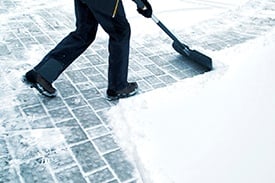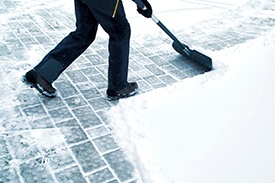Explore Springs Apartments

 If you’re making a Rochester move in winter, you’ll find high temperatures in the 20s, lows dipping below the teens, and ample snowfall. With an average of 13 inches of snow in December, 12 inches in January, and another 9 in both February and March, there are more than a few challenges to moving during this season.
If you’re making a Rochester move in winter, you’ll find high temperatures in the 20s, lows dipping below the teens, and ample snowfall. With an average of 13 inches of snow in December, 12 inches in January, and another 9 in both February and March, there are more than a few challenges to moving during this season.
Use the following tips to help ensure a smooth winter move in the Med City:
1. Watch the Weather
The winter weather in Rochester can be unpredictable, so you’ll want to keep a close eye on the forecast in the days leading up to your move. Be sure to give yourself a larger relocation window than you would in summer, just in case Mother Nature decides deliver a storm on your selected move date.
2. Clear a PathMake sure to a clear path from the door to the moving truck at both your old and new apartment home. Shovel snow away and lay down a bit of salt if needed to create a safe walking path for everyone involved in your move.
3. Dress in Layers
At the beginning of the move you’ll really feel the chill, but the physical activity will warm you up quickly in that thick winter coat. Dress in several layers so you can peel them off or add them back on as needed.
4. Keep Floors Covered
In the winter, you’ll typically find at least some snow on the ground in Rochester. Cover your floors with plastic tarp to keep the moisture contained while you’re traipsing in and out of the during the move. Pick up the tarp as soon as possible once you’re finished so puddles don’t linger.
5. Choose Efficient Heating
Your apartment’s furnace can’t keep up with the demands of heating a unit that has the door wide open. Minimize your utility expenses by turning off your heater during the move, and set up a space heater in a back bedroom or bathroom where you can close the door and keep the warmth contained.
6. Set Aside Important Items
Pack your most important items separately and keep them in the front seat of your moving vehicle. This includes clothing for the first few days, towels and sheets, a shower curtain, toiletries, some basic cooking and eating utensils and any sensitive electronics you may have.
Moving in winter can presents some challenges, but with a little planning you can enjoy a successful transition to your new home. Do you have additional winter moving tips? Let us know in the comments below!
These Stories on Relocation
Take Comfort In Being Home
262-502-5500
We Your Pets
Privacy Policy | Cookie Policy | Terms of Use | Accessibility Statement
Owned and managed by Continental Properties, an award-winning corporate leader and developer of apartment communities nationwide. Copyright © 2025 Springs Apartments